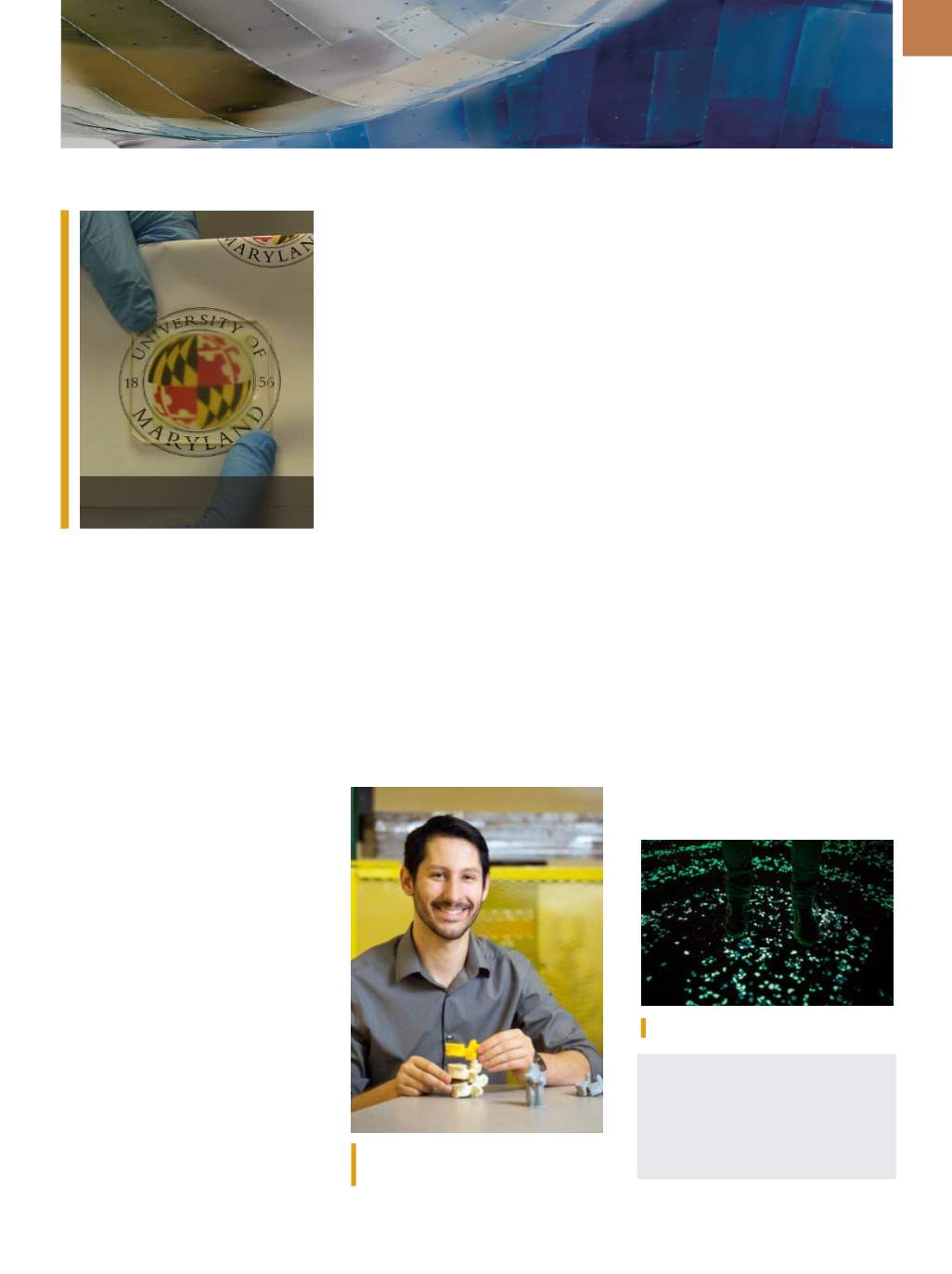

A D V A N C E D
M A T E R I A L S
&
P R O C E S S E S |
S E P T E M B E R
2 0 1 6
7
WOOD YOU LOOK AT THAT?
Liangbing Hu and his team at
the University of Maryland, College
Park, removed the molecule in wood—
lignin—that makes it rigid and dark in
color. They left behind the colorless
cellulose cell structures, filled them
with epoxy, and created a version of
the wood that is mostly see-through.
“It can be used in automobiles when
the wood is made both transparent and
high strength,” says Hu. “You could also
use it as a unique building material.”
Xylem and phloem pass water and
nutrients up and down the tree. These
vertically aligned channels in the wood
are a naturally grown structure that can
be used to pass light along, after the
wood has been treated. The resulting
3-in. block of wood features both high
transparency and high haze, the ability
to scatter light. This would be useful,
says Hu, in making devices comfortable
to look at. It would also help solar cells
trap light because the light could easily
enter through the transparent function,
but the high haze would keep it bounc-
ing around near where it would be
absorbed by the solar panel.
For more
information: Liangbing Hu, binghu@
umd.edu,
www.umd.edu.
Are you working with or have you
discovered a material or its properties
that exhibit OMG - Outrageous
Materials Goodness?
Send your submissions to
Julie Lucko at
julie.lucko@asminternational.org.
OMG!
OUTRAGEOUS MATERIALS GOODNESS
A block of wood is made transpar-
ent at the University of Maryland.
Glow-in-the-dark cement.
SimuBone could replace cadavers in
medical research.
3D-PRINTED BONES ADVANCE
MEDICAL RESEARCH
Advanced Bone Technology, Far-
go, N.D., is hoping to reduce cadaver
use in medical research by 3D printing
artificial bones. SimuBone is an arti-
ficial bone platform that can be man-
ufactured on demand at a fraction of
the cost of alternatives. It combines
engineered materials with a specialized
additive manufacturing process to pro-
duce what is said to be the most realis-
tic alternative to human bone available.
High-resolution manufacturing precise-
ly reproduces every detail of the desired
bone, including the contour of cortical
hard bone and the intricate structure
of trabecular spongy bone. SimuBone’s
performance against engineered ma-
terials and processes is comparable to
live bone and tailorable to a specific
sex, age, disorder, or even a particular
patient. By modifying the geometry
and performance to customer specifi-
cations, SimuBone devices reportedly
meet needs ranging from repeatable
lab tests to personalized healthcare.
The artificial bone will also enable test-
ing and development of medical devic-
es and training for surgical procedures.
advancedbonetech.com.
LIGHT-EMITTING CEMENT
SAVES ELECTRICITY
José Carlos Rubio at the Univer-
sity of San Nicolas Hidalgo-Michoac-
an, Mexico, created a cement additive
that absorbs solar energy during the
day and then emits light for up to 12
hours after dark. The glow-in-the-dark
cement—which would eliminate the
need for electricity to light highways—
is the latest innovation in concrete and
cement products. Rubio modified the
microstructure of the cement, allow-
ing the concrete to take in solar energy
and convert it into light. He says the
material could last as long as 100 years
and the intensity of blue or green light
can be adjusted depending on need.
Unlike plastic fluorescents, which have
an average lifespan of three years due
to decay from UV rays, Rubio explains
that his cement will not degrade as a
result of sunlight exposure. In addition,
the only byproduct of the manufactur-
ing process is steam.
www.umich.mx.


















